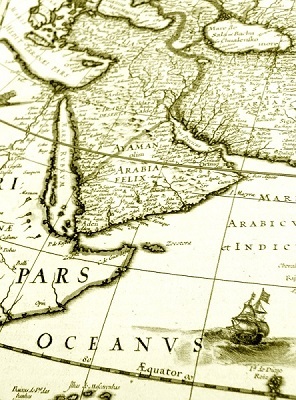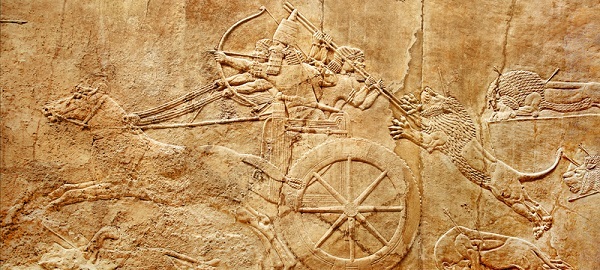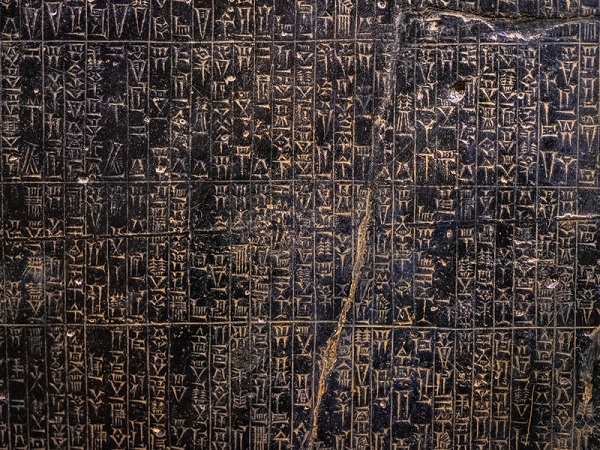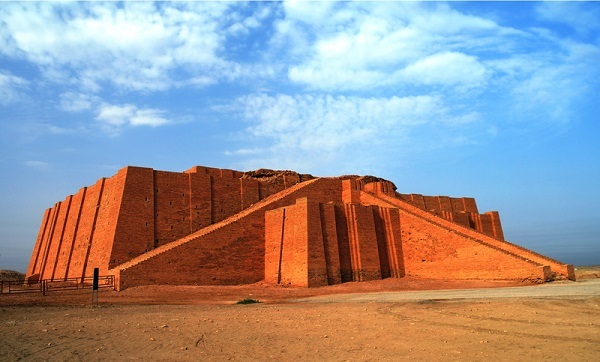

The interaction between the divine and the human is frequently the subject of ancient Near Eastern art. A large portion of it has a religious theme and is intended for use in religious ceremonies or deity worship. Art from the ancient Near East is also political. It was employed by rulers to flaunt their authority and status.
 The term "ancient Near East" is used to refer to civilizations that flourished in what is now Turkey, the Mediterranean coast, Iran, Iraq, Syria, and Lebanon between 3000 BCE and 600 CE.
The term "ancient Near East" is used to refer to civilizations that flourished in what is now Turkey, the Mediterranean coast, Iran, Iraq, Syria, and Lebanon between 3000 BCE and 600 CE.
It was a period and location when writing and law, monarchy and bureaucracy, diplomacy and state-sponsored warfare, mathematics and literature saw their origins, a period of remarkable innovation marked by the wheel’s development and early advances in astronomy, law, and diplomacy.
The numerous people, towns, kingdoms, and empires that inhabited the area throughout thousands of years are reflected in the vast variety of shapes and styles found in ancient Near Eastern art. However, there was also consistency and continuity in the middle of this diversity.
One of the enduring and essential aims of ancient Near Eastern art was the connection between the earthly and heavenly realms. These images were created to speak to both human and divine audiences, whether they took the form of a votive sculpture that was placed in a god's temple to be worshipped or a statue of a pious ruler who the gods in all his operations directed. Except for humans and other living things, the world of the gods was home to supernatural beings that had the power to either defend or damage people and other living things.
The works on display have a wide range of materials, dates, and cultural contexts, but they all share a similar aesthetic language.
Showcase of power through art form- A person's overall power or a particular role within the city was intended to be conveyed to others through artwork. These pieces range in style from representations of animals to scenarios from religious rituals. The Near Eastern tribes used art to create a hierarchy between the kings, the gods, the hunters, and the lesser classes.
Showcase of battle depicts- Battle scenes and figures of Gods and rulers were painted by artisans and craftsmen as ornaments and as a homage to those they revered. Many of the entry gates to palaces are adorned with magnificent statues of animal-like guardians.

Assyrian wall relief, Ancient carving from Mesopotamia
Conveying laws and guidelines through art forms- This ancient period also produced the earliest types of writing. On steles and tablets, cuneiform is used to communicate local laws and commercial ethics.

Ancient Sumerian stone carving with cuneiform scripting
The uses of visual narratives or different methods for conveying narratives through visual art. This civilization, which was multicultural and multiethnic, showed tolerance for many cultural practices.
Showcase battles through the pictorial depiction and beautiful portraits of the battlefields.
Even with something that appears to be fresh and new, there will always be something dated and familiar. In the field of art, this is especially valid. All through history, artists have drawn inspiration from those who came before them. As artists create new pieces of art, they include and modify the art that came before them.
This occurred throughout the historical Near East. Few cultures are depicted in the ancient Near East discussing evolution and the growth of art. The Sumerians established a basis for art that other cultures later appropriated and modified to suit their objectives and requirements.
Ancient Near Eastern art was shaped by the Sumerians. They constructed ziggurats, which were enormous, rectangular, terraced temples, invented cylinder seals to affix distinctive signatures to other items, and popularised relief sculptures. They also invented wedge-shaped cuneiform writing.
These Sumerian inventions were widely adopted by various cultures, who freely appropriated and modified them.
Sargon, the king of Akkad, who had defeated the Sumerians, wasted little time in utilising their artistic legacy. The Sumerian technique was employed by Akkadian painters to produce reliefs and seals, but they also used this medium to communicate their problems and passions.
The creative expression of their governing authority and conquest might be of particular importance to the Akkadians. They achieved this by producing works of art which show the victory of this great ruler over an adversarial nation.
Like the Akkadians, they liberally appropriated Sumerian creative traditions, producing ziggurats, cuneiform writing, relief sculpture, and cylinder seals.
The Babylonians raised the bar for artistic perfection. For instance, the Stele of Hammurabi combines cuneiform writing and relief sculpture to convey this great king's unique legal code. The Epic of Gilgamesh was one of the legendary tales that the Babylonians preserved in cuneiform and on reliefs.
In conclusion, Ancient Near East Art History is a vast field that encompasses the study of art, architecture, and artefacts from various periods and cultures. It provides us with a deeper understanding of the art, architecture and artefacts that shape and reflect the cultural, social, and political values of a given period and society. Ancient Near Eastern artwork took many forms. Relief sculptures, steles, ziggurats, weaving, and metalwork were some common art styles developed in these cultures.
Q1. What are the three main historical eras of the ancient Near East?
Ans. The Ubaid period
The Uruk period (4th millennium BC)
The Early Dynastic Eras (3rd millennium BC).

Restored ziggurat in ancient Ur, Sumerian temple, Iraq
Q2. What were the names of the three eras in ancient Egypt?
Ans. The most ancient kingdom from around 2,700 to 2,200 B.C.E., the Middle Kingdom, which lasted from 2,050 to 1,800 B.C.E., and the New Kingdom (about 1,550-1,100 B.C.E.).
Q3. What were the five social classes in Egypt in ancient times?
Ans. The pharaoh was at the pinnacle of the social pyramid made up of these groups, and the peasants were at the bottom. They were surrounded by governmental officials, clergymen, scribes, and artisans.